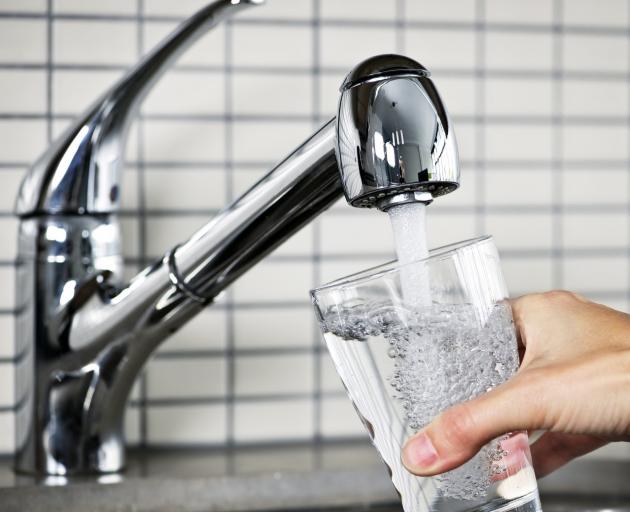Top Stories
Investigation Into Gore’s Nitrate Spike in Drinking Water Continues

Environment Southland is currently investigating a significant spike in nitrate levels detected in Gore’s drinking water on July 18, 2023. The water sample recorded a nitrate concentration of 11.4 mg per litre, exceeding New Zealand’s established safe limit by 0.1 mg. Fortunately, the tap water was deemed safe for consumption again just three days later.
Complex Investigation Underway
According to Donna Ferguson, Resource Management Manager at Environment Southland, tracing the source of groundwater contamination poses unique challenges. Unlike surface water discharge, which often presents visible sources, groundwater contamination requires extensive investigation due to its hidden nature. Ferguson noted that the investigation is “extremely complex.”
Following meetings with local landowners and conducting onsite assessments, the regional council is focusing on thorough geochemical and geophysical analyses. Ferguson mentioned that while some necessary data already exists, it may require re-evaluation to yield clearer insights.
Peter McDonald, the councillor for Hokonui, emphasized the importance of refraining from public comments during the investigation process to avoid compromising its integrity. He remarked, “These investigations are not cheap to run and take a lot of technical and legal resources.”
Health Concerns and Regulatory Response
Steve Taylor, head of operations at the national water regulator Taumata Arowai, stated that elevated nitrate levels in drinking water result from the contamination of “source water,” which encompasses nearby rivers, lakes, and aquifers. Protecting this source water is essential for ensuring safe drinking water, and the responsibility lies with Environment Southland, which oversees discharge consents for contaminants.
In a related incident, just a day after the water was declared safe, the town’s well-known brown trout statue and welcome sign were vandalized by Greenpeace Aotearoa. The trout was altered to appear lifeless, while the sign was modified to read, “Welcome to Gore, where dirty dairy wrecked the water.” Greenpeace subsequently called upon Ben Bell, the Mayor of Gore District, to assist in what they described as a drinking-water crisis.
In their press release, Greenpeace advocated for a reduction of the national nitrate limit from the current 11.3 mg per litre to a considerably lower threshold, citing health risks associated with higher nitrate levels. They referenced studies linking levels as low as 1 mg per litre to an increased risk of bowel cancer, as well as potential complications for pregnant individuals when consuming water with nitrate concentrations exceeding 5 mg per litre.
In response to these health claims, Taylor referenced findings from the World Health Organisation and a 2021 review conducted by the Liggins Institute at Auckland University, which found no consistent evidence connecting drinking nitrates with preterm births. He highlighted that the primary concern is “blue baby syndrome,” a risk associated with nitrate levels above the national limit.
While Environment Southland continues its investigation, they urge landowners to conduct tests on their bore and domestic water supplies. Additional information on nitrates, bore maintenance, and testing is available on their website.
-

 World4 months ago
World4 months agoTest Your Knowledge: Take the Herald’s Afternoon Quiz Today
-

 Sports4 months ago
Sports4 months agoPM Faces Backlash from Fans During Netball Trophy Ceremony
-

 Lifestyle4 months ago
Lifestyle4 months agoDunedin Designers Win Top Award at Hokonui Fashion Event
-

 Entertainment4 months ago
Entertainment4 months agoExperience the Excitement of ‘Chief of War’ in Oʻahu
-

 Sports4 months ago
Sports4 months agoLiam Lawson Launches New Era for Racing Bulls with Strong Start
-

 World5 months ago
World5 months agoCoalition Forms to Preserve Māori Wards in Hawke’s Bay
-

 Health4 months ago
Health4 months agoWalking Faster Offers Major Health Benefits for Older Adults
-

 Lifestyle4 months ago
Lifestyle4 months agoDisney Fan Reveals Dress Code Tips for Park Visitors
-

 Politics4 months ago
Politics4 months agoScots Rally with Humor and Music to Protest Trump’s Visit
-

 Top Stories5 months ago
Top Stories5 months agoUK and India Finalize Trade Deal to Boost Economic Ties
-

 Health2 months ago
Health2 months agoRadio Host Jay-Jay Feeney’s Partner Secures Visa to Stay in NZ
-

 World5 months ago
World5 months agoHuntly Begins Water Pipe Flushing to Resolve Brown Water Issue









